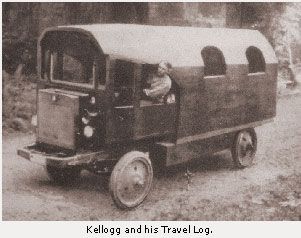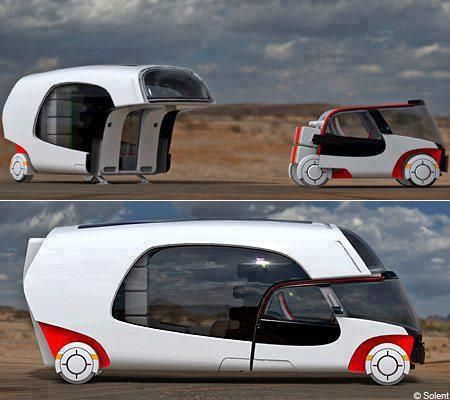... whilst this one is said to the oldest classic camper in the world.

Read all about it...
Owner of oldest motorhome sang like a bird (and whittler of the century!)
Charles Kellogg owned and drove the world's oldest RV. The RV itself, a motorhome, was not so old, but the material it was made from -- a one-piece carved-out log of a 4,800-year-old coastal redwood tree -- surely gave it a solid claim as the RV made of the oldest materials.
Charles Kellogg was born in the California High Sierra in 1868. His neighbors were Indians, who became his teachers. One thing that young Charles learned was to sing like birds. Later, he performed his bird calls around the world. They were recorded by the Victor Talking Machine Company.
An even more remarkable talent was Kellogg's ability to extinguish a flame of fire with this voice. Because of his unique talents, for a time he was the most popular headliner in Vaudeville.
He traveled four times around the United States in his home-built motorhome, completed in 1917. He called it a Travel Log. It was the largest single piece of hewn timber in the world. Kellogg had it mounted on a Nash Quad Chassis, the only truck capable of transporting the eight-ton vehicle. Kellogg hollowed the log with an ax, shaping it into a complete dwelling -- the basic amenities found in today's modern RVs except for a bathroom and shower.
He toured the United States to sell World War I Liberty Bonds until peacetime, and then to promote the preservation of the great groves of California redwoods.
Most of Kellogg's later years consisted of touring for three or four months, then spending the rest of the year at his home in Morgan Hill, Calif., or in the wilderness where he was most comfortable. He was a friend to other great naturalists including John Muir and John Burroughs. Kellogg died on September 5, 1949 after a lifelong career as a naturalist and nature singer.


